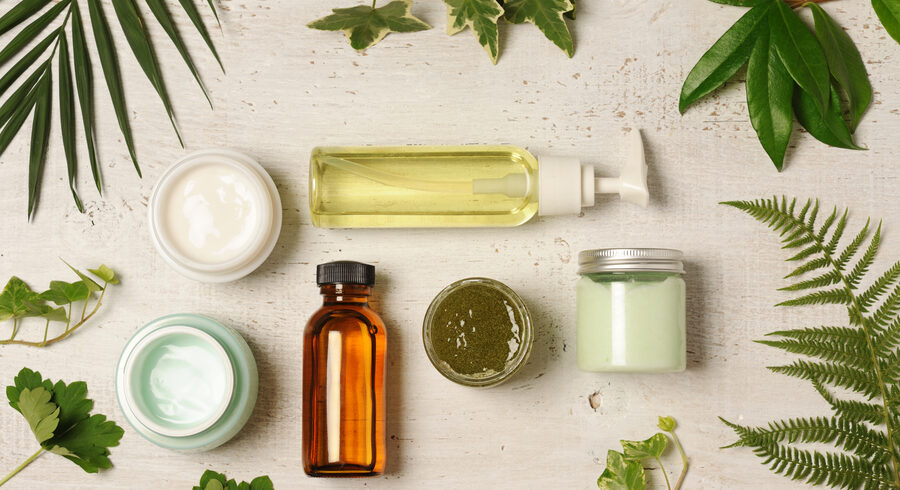
Biodegradability in cosmetics - what does it really mean and how to test it?
Biodegradability in cosmetics has ceased to be just a marketing argument. It is now becoming a real criterion for assessing the environmental impact of a product. Manufacturers and consumers are increasingly interested in what happens to a cosmetic after use - do the ingredients decompose safely? Do they remain in the water, the soil, the food chain?
Formulation laboratories such as MPR LABS, support brands in developing formulas that not only work effectively, but also meet environmental requirements.
What is the biodegradability of cosmetic ingredients?
Biodegradability is the ability of a substance to be broken down by micro-organisms - bacteria, fungi, protozoa - into simple, harmless compounds such as water, carbon dioxide or biomass. For cosmetics, this means that the ingredient does not linger in the environment after being rinsed from the body or hair.
Biodegradation can be complete (complete decomposition) or partial (derivatives are formed which also need to decompose). The decomposition environment is also important - some substances are only biodegradable under laboratory conditions, but not in nature.
Biodegradable vs traditional ingredients - which to choose?
Biodegradable ingredients are receiving increasing attention in cosmetics. These include, for example, certain mild surfactants of plant origin, esters of natural fatty acids, sugar alcohols or plant oils and butters. These are substances that break down quickly and safely.
Meanwhile, many conventional ingredients such as silicones, synthetic polymers or microplastics, can persist in the environment for decades. Importantly - not every natural ingredient is biodegradable, and vice versa: not every synthetic one is necessarily harmful to the environment.
Biodegradability testing of cosmetic ingredients
The declaration that an ingredient is 'biodegradable' requires confirmation by testing. Biodegradability tests is carried out in accordance with OECD standards - e.g. OECD 301 (basic tests), OECD 302 (enhanced decomposition tests) or OECD 310. Most commonly, the rate of CO₂ release by micro-organisms or changes in oxygen content in closed systems are analysed.
It is worth knowing that:
- tests relate to specific environmental conditions (e.g. water, soil),
- one ingredient may be biodegradable in one environment but not in another,
- The lack of test data does not entitle you to use marketing statements.
Testing the biodegradability of cosmetic ingredients is part of a broader environmental impact assessment of the product.
How to design recipes with biodegradability in mind?
Laboratories developing cosmetic formulations have a real say in whether a product will be environmentally friendly. Biodegradability in cosmetics is not a feature added at the end - it must be planned already at the formulation stage.
It is important to take into account:
- source and type of each ingredient (biological origin, microbiological decomposition),
- presence of preservatives - some may interfere with natural biodegradation processes,
- compatibility of components - the decomposition of one does not guarantee the decomposition of the whole formula.
Technologists and specialists in the field. safety assessments of cosmetics of MPR LABS support customers in compositional analysis for degradation and select raw materials that strike a balance between effectiveness and ecological impact.
Biodegradability and marketing claims and the law
The use of the slogan 'biodegradable' requires particular care. EU regulations and the European Commission's guidelines on so-called green claims make it clear that any declaration must be supported by documentation.
General phrases such as "organic product" without justification are not acceptable. It is necessary to:
- specifying which ingredients are biodegradable,
- reference to the conditions under which the tests were carried out,
- clear communication - no misleading.
A sound approach helps to build trust and avoid accusations of greenwashing.
Is 100% biodegradability of cosmetics possible?
A completely biodegradable cosmetic formula is an ideal that many brands strive for. However, technological limitations, the cost of raw materials and the need to ensure product sustainability mean that this is not always possible.
In practice, manufacturers choose to compromise - creating formulations that are as environmentally friendly as possible, but still effective and safe. However, the increasing availability of biodegradable ingredients and the awareness of formulation technologists gives hope for the increasing use of such solutions.
Biodegradability in cosmetics is an issue that requires knowledge, research and a responsible approach. Designing recipes with the environment in mind is not a trend - it is a duty to future generations and nature.
If you want to develop a formulation based on biodegradable ingredients that meets market and environmental requirements, contact us via MPRlabs.com.